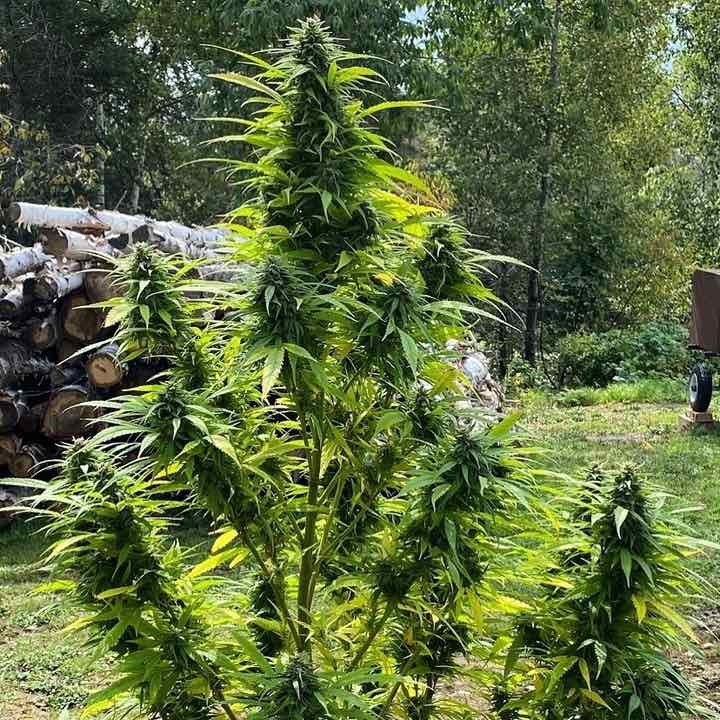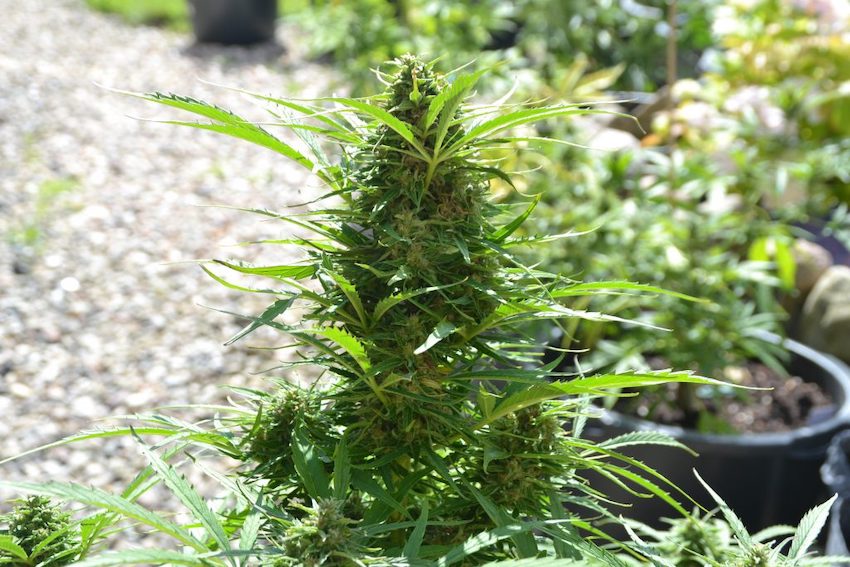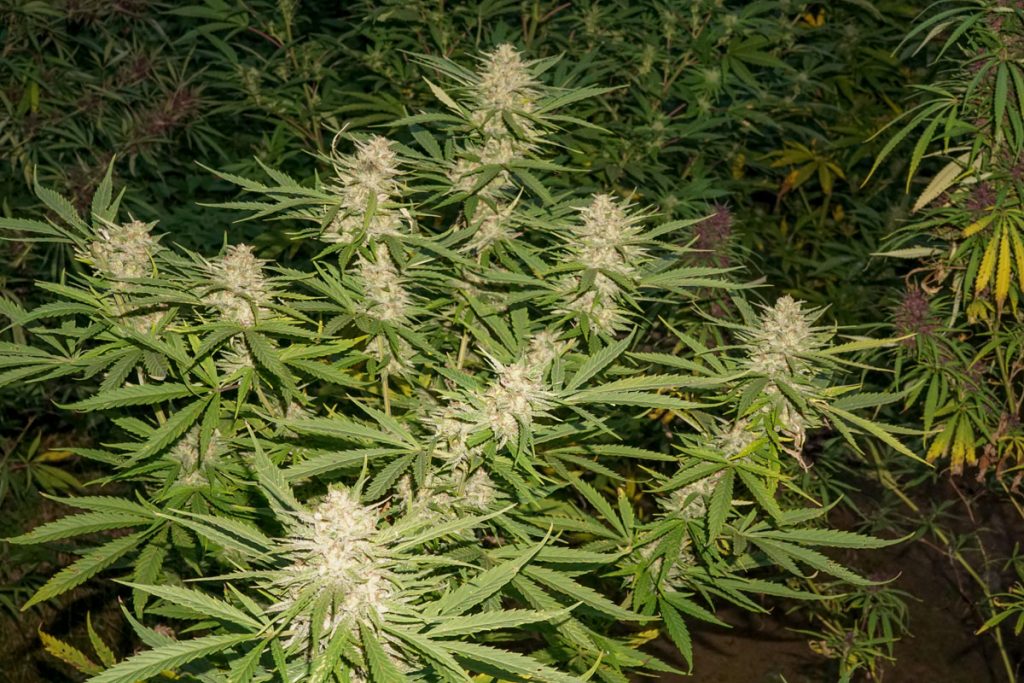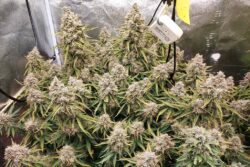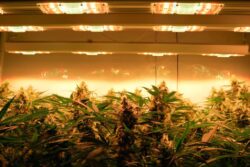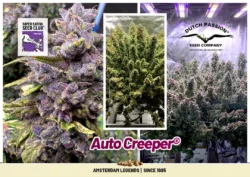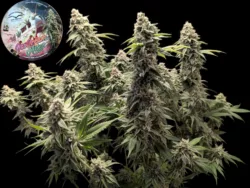You may be lucky enough to be able to grow cannabis indoors at home, or perhaps outdoors on your private terrace or patio. But not everyone has those options. For many people the only way they can be self-sufficient in their cannabis needs is through guerrilla growing. This means finding a suitable place in the countryside, forests, fields or hills to grow a few cannabis plants. Follow a few established rules and you will find guerrilla growing is an easy, low-cost route to great quality cannabis.
Cannabis guerrilla growing 10-step strategic plan
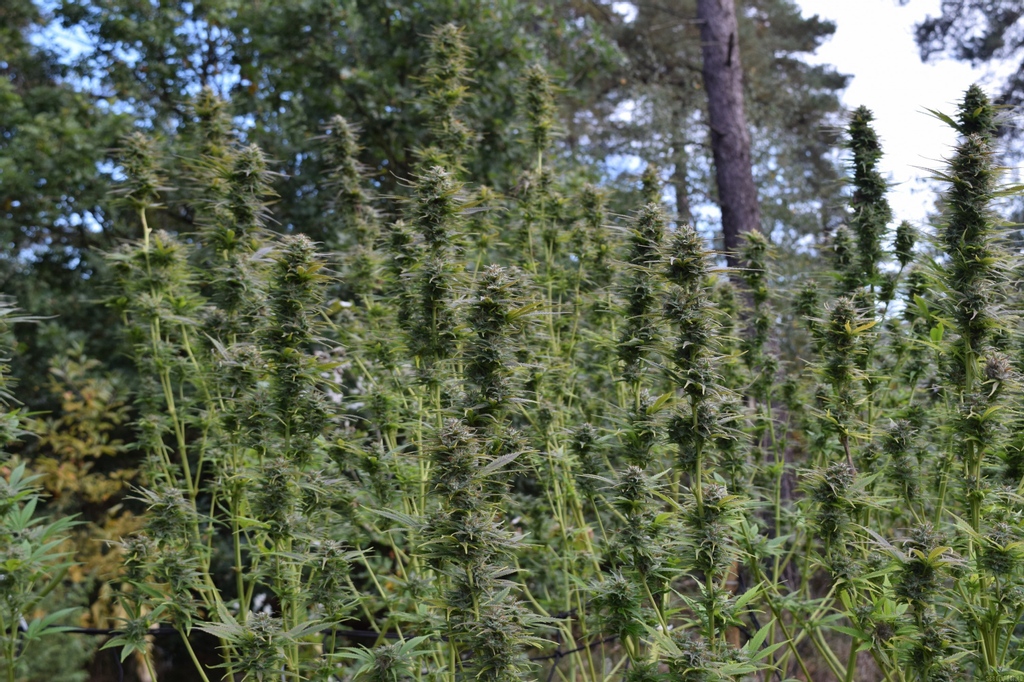
The Pros and Cons of guerrilla growing
Guerrilla growing simply means cannabis cultivation in the great outdoors, away from your home. It’s a surprisingly easy way to grow cannabis, but you will need to use proven cannabis strains to get the best outdoor grow results. One of the many attractions to guerrilla growing is the inherently low cost.
There are extra challenges that should be taken into consideration when considering whether it’s worth undertaking a guerrilla grow this summer. But if the only way you can supply yourself with cannabis is with a guerrilla grow then the harvest is worth the effort. Here are the main pros and cons you will need to consider.
Pros
- No expensive indoor grow room/light is needed, that saves you cash straight away
- No need to worry about having cannabis plants growing at home
- Main start-up costs are the cannabis seeds and possibly some extra soil/fertiliser & nutrients
- No significant ongoing running costs, the sun provides the light and warmth.
- A single outdoor plant can yield several hundred grams of cannabis. Get conditions (and cannabis seeds) right and you can expect heavy harvests and excellent quality buds
Cons
- Good weather can’t be guaranteed, conditions may not be as perfect as an indoor grow room. Your plants may have to deal with poor early/late season weather.
- Pests and grazing animals (deer, rabbits, goats etc) need to be considered
- Drought and extreme summer heat is increasingly becoming an issue for some. Supplying your plants with water may be required.
- Finding a good grow location where your plants won’t be discovered by dog walkers, hikers etc can require some skill and plot preparation tips.
Hidden outdoor grow 10-step strategic plan
If you’ve never done a guerrilla grow before then the following top-10 tips will help you avoid the most common pitfalls.
1. Find the perfect hidden grow spot
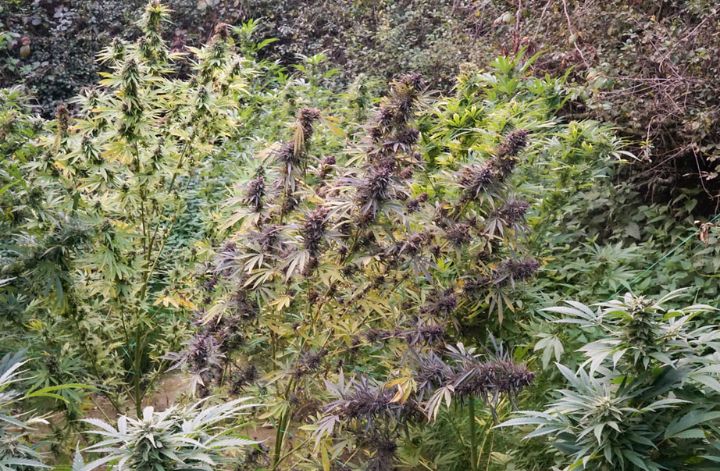
Ideally you want all-day sunshine. Perhaps you will have to compromise a little if trees are nearby. You also want privacy so that your plants won’t be seen and stolen. You need to be able to visit your plants without leaving an obvious train or path to your grow location – eventually someone will follow it.
Finding the perfect hidden grow spot takes effort! Many guerrilla growers actually have several grow locations (in case one is lost to thieves) and continually look for new ones via online maps. A personal visit to the location will be required to assess the suitability.
Related:
Growing cannabis outdoors
Guerilla grow location checklist:
This is perhaps the number 1 concern for many guerrilla growers. You need to feel confident and comfortable that your grow location won’t be easily discovered. Select a spot which is unlikely to be stumbled upon by a member of the public. This doesn’t automatically mean that the grow location has to be miles away from civilisation. Many guerrilla growers have grown a plant or two in sneaky urban settings or on unused industrial land.
Best practice is to remove all waste (bags, tools, etc) from your site. Leave it looking as natural as possible in order to avoid attention. Remember during winter, with less foliage on surrounding bushes, any tools left in your grow location may be visible.
Those that take security to the max may want to invest in a trail-cam to monitor the guerrilla grow location for intruders when you are not there. When choosing a guerrilla grow location you can also take advantage of natural barriers such as streams, cliffs, brambles, steep ground etc to deter visitors.
The experienced guerrilla grower will check out the soil quality. It may be good quality loam-based soil, but sometimes it may seem to be too clay-rich/heavy. Other growers may have sandy, nutrient-poor soil. Soil test kits are available online (or from garden centres) to help you define the precise soil type. But if in any doubt it is good practice to supplement the local soil with some supermarket (or grow shop) soil. You can also add other soil improvers, granular nutrients, manure, water-holding crystals, slow release nutrients etc to improve what nature has to offer.
Related:
What is the best soil for growing autoflowering cannabis seeds?
Carrying water to your plants during times of drought is a thankless and repetitive task. When scouting for grow locations via online maps you may prefer those locations that are close to a stream or river. This allows you a local, free source to fill your water containers.
Protecting your guerrilla grow spot from unwanted human/animal visitors often necessitates the creation of a heavy duty, thorny perimeter to your grow spot. However you don’t want the surrounding vegetation to take sunlight away from your prized cannabis plants. So you may need to visit your plot discreetly to reduce the height of plants on the perimeter of your grow locations. This may also include removing the occasional tree branch if it is creating shadows on your plants.
Well organised indoor cannabis growers rarely need to concern themselves with the thought of pests. But for outdoor growers pests are inevitable. You may wish to visit your guerrilla grow as often as practically possible to check for signs of infestation. The proactive and serious guerrilla grower will often fight back by establishing colonies of predators to kill the pests. These can be bought cheaply online or from your local garden centre and are surprisingly effective.
Many serious guerrilla growers take the time to extend the perimeter protection around the best grow locations by planting brambles and thorny plants to deter humans and animals alike. Some growers will create intricate crawl tunnels entrances through the brambles, this avoids leaving an obvious entrance. Over several years a well planned guerrilla grow location can benefit from continuous improvement by the resourceful and forward-thinking outdoor grower.
You can also plant companion plants which will attract beneficial insects and repel pests.
2. Select the right cannabis seeds

It all starts with the cannabis seeds! However relatively few strains are bred for outdoor growing. These days much breeding and genetic selection is done for indoor growing. If growing cannabis outdoors, especially in climates with border-line conditions you need to buy the best outdoor feminised seeds (or autoflowering cannabis seeds) that will work in your climate.
Related:
Top 10 outdoor cannabis strains
Cannabis seed selection checklist:
Most guerrilla growers favour fast flowering strains that finish before the bad weather arrives. For those with very short outdoor growing seasons autoflower seeds are a great option, growing from seed to harvest in around 3 months.
Tall growing cannabis strains may deliver XXL yield potential, but they can be spotted from some distance away. If that’s an issue for you, you may prefer to grow squat indica feminised seeds or autoflower seeds, which have several advantages.
Autoflowering cannabis seeds tend to give rise to short, bushy plants averaging around a metre tall. They are also much quicker to grow than outdoor feminised cannabis seeds which can take around 6 months for a complete grow cycle.
The fast 3-month grow cycle of an autoflower means that you may be able to get two, or perhaps even three, successive harvests per year.
Related:
Autoflower seed vs feminised seed outdoor cannabis growing
Most recommended cannabis seeds for an outdoor guerrilla
The following original autoflower and feminised cannabis seeds from Dutch Passion all give great results outdoors, even in tough and demanding condition.
Frisian Dew
Typically ready to harvest around early October in the Northern Hemisphere (early April in Southern Hemisphere). Frisian Dew is a seasoned, proven outdoor performer and a repeat best seller with Dutch Passion’s outdoor customers. Can reach 3m – 4m tall in optimised conditions.
Auto Mazar
Taking around 3 months to grow from seed to harvest, Auto Mazar grows well outdoors even in areas with the shortest of grow seasons. The sticky buds pack a real punch when grown under the sun. Tends to reach around 1 metre tall.
Think Fast
A feminised strain with recessive autoflowering genetics, Think Fast tends to be ready for harvest as early as September in the Northern Hemisphere (March in Southern Hemisphere). A cult favourite among guerrilla growers, Think Fast is often regarded as one of the most potent guerrilla strains available. Tough, resilient and reaches around 1.5m tall.
3. Prepare the soil of your grow spot
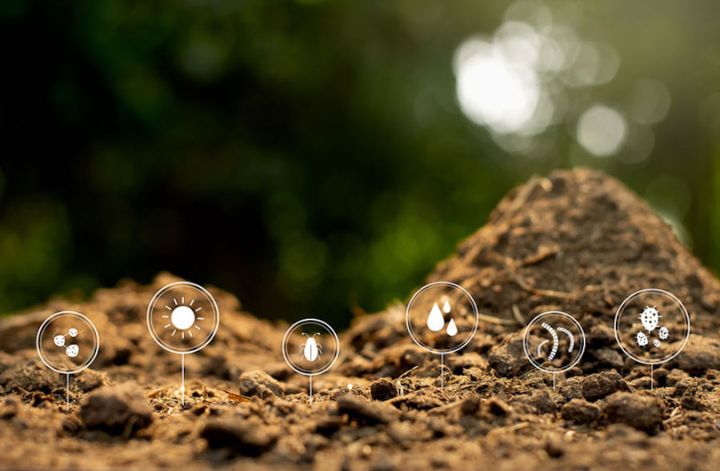
Experienced guerrilla growers know that a little bit of extra effort put into soil preparation will return big rewards in terms of yield and quality improvements.
Just digging the soil and turning it over a couple of times before you start growing will help improve soil structure, remove compacted soil and improve aeration levels.
More experienced growers will improve the soil with various supplements (lime, worm casting, guano, well rotted manure etc) from the garden centre. Healthy cannabis roots below ground are the key to a thriving plant above ground.
Guerilla soil preparation checklist:
A healthy soil will feel neither too sandy nor too clay-like. It should extend to a good depth and drain easily. Healthy soil will have a crumbly texture and a dark appearance. Presence of earth worms are a sign of a healthy soil. Other indications of healthy soil include signs of underground animal activity and plants roots/fungi. Soil that is rich in desired organic material tends to be dark, crumbling off the roots of the plants you pull up.
Don’t worry if you feel you need to supplement your local soil with supermarket soil/compost – do what is necessary to optimise the future health prospects of your cannabis plants.
Cannabis plants rooted directly into good quality moist earth may need little extra in terms of nutrition. Some growers dig some wet-rotted manure into their guerrilla grow location. This is best done at the end of the previous years grow, giving time for the manure to decay – fresh manure tends to ‘burn’ cannabis roots.
Slow release organic nutrients such as those from BioTabs are popular with guerrilla growers. Others will apply a light top dressing of general purpose bloom nutrients as plants approach bloom.
So long as the nutrients are mixed at the recommended/appropriate strengths you can add them during the grow, tough this may not always be necessary if the roots have unrestricted access to healthy soil. Never-the-less, some guerrilla growers feel it is good practice.
4. Consider setting up an irrigation system
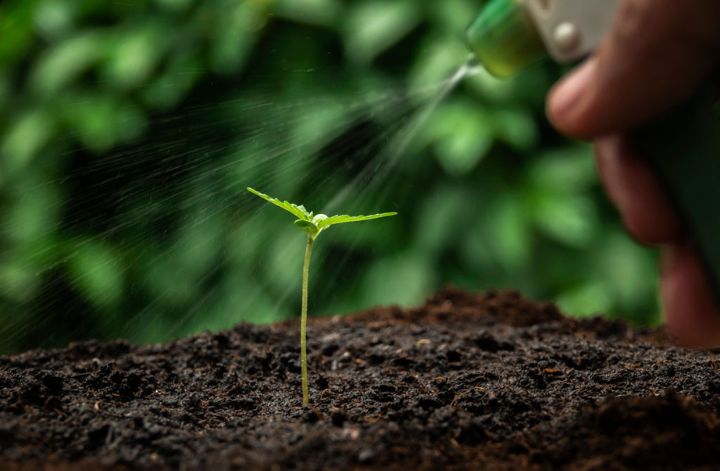
A mini-irrigation system for your guerrilla grow isn’t as easy as it may sound. You probably need to somehow transport a collapsible water container to your grow location and fill it up from a stream. Then you need to be connect irrigation hosing and perhaps a timer system to release water regularly.
All this equipment (old plant pots, tools, fertiliser sacks etc) can be discovered, especially in winter, and may inadvertently disclose your grow location unless it is thoroughly cleaned away after each grow.
5. Plan everything from cannabis seed to harvest
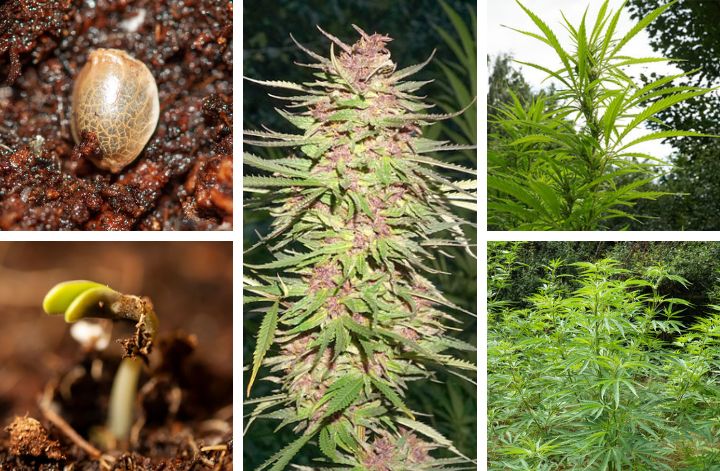
Plan your guerrilla grow carefully. The amount of material you can transport may depend on the distance you need to walk from your transport.
Ensure your cannabis seeds, nutrients etc are all ordered in time. Plan your site preparation, work out which approach routes are possible without leaving a trail and where your water sources are. You may wish to visit your plants at a time of day when the area is quiet.
Ensure you have a plan to transport your buds home and know how you will dry them. Some guerrilla growers dry their crop at home in a shed or even in a drying tent in a spare (bed) room. But there are some that make a drying room/shelter in the woods and use a gas heater and a fan to ensure the right temperature and humidity is maintained.
Remember to set aside time to properly clean and clear your guerrilla grow location so that no traces are visible once your crop is harvested.
Guerilla soil preparation checklist:
In Northern Europe your grow season starts after the last frost. That may mean waiting until May before planting your seedlings outdoors. You may well be planning to have finished harvest during October (photoperiod strains). Summers may be cool and grey, but guerrilla growers still have great success with feminised seeds as far north as Northern England/Southern Scandinavia. At more northerly latitudes autoflower seeds start to become a more realistic and reliable option.
For those growing cannabis seeds outdoors in the UK, or similar latitudes, the following grow guide details some specific information which can help you bring home a crop even in some of Europe’s most demanding outdoor conditions.
Those growing cannabis outdoors in Southern Europe (or similar latitudes) can enjoy a long growing season and may be able to grow 3 successive crops using autoflower seeds. With good conditions possible in November, even slow-blooming photoperiod sativa strains can be grown outdoors.
Particular attention should be given to plant water requirements when growing cannabis in Southern Europe due to the hot & dry conditions.
Many experienced growers keep notes and grow diaries of their plants. Writing down their findings and results often helps those memories and information to become permanent. Ultimately, the main beneficiary of this increased knowledge is you, the grower with an increased understanding of the conditions required to allow your plants to really thrive.
6. Germinate your cannabis seeds indoors
Germinating your cannabis seeds indoors under carefully controlled conditions maximises your germination rate. Furthermore, your seedlings are protected from the worst of the outdoor weather and can have a less stressful start to life under optimised indoor conditions.
Related:
Best way to germinate cannabis seeds, moist (not drenched) cotton pads
7. Planting cannabis seedlings in your guerrilla spot

When your cannabis seedlings are a few weeks old you may wish to gradually acclimatise them to outdoor life. Take them outdoors for a few hours each day when conditions are good.
Increase this amount of outdoor time gradually over a week or two. Eventually you can take your seedlings to their final guerrilla grow spot for transplanting.
Dig a generous sized hole and fill with good quality soil. This could be supermarket soil or perhaps a blend of grow shop soil and local soil. Put your seedling into the soil, and water well (making it easier for new root growth). You may wish to add a generous sprinkling of slug/snail pellets around your plants to keep them safe.
8. Consistently check your grow spot and maintain optimal plant health
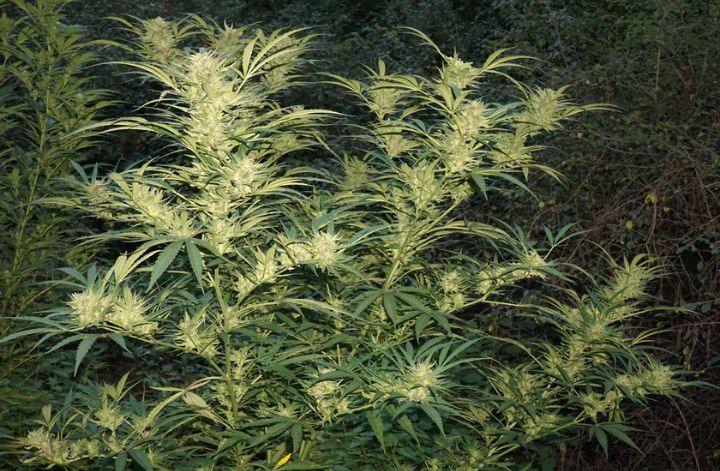
You will want to visit your plants as often as you can, but you definitely won’t want to leave an obvious trail/path to your guerrilla grow location. This may limit the frequency of your visits.
In times of drought you may wish to transport water from a nearby source to sustain your plants. You may also wish to bring beneficial insects, e.g. Ladybirds/ladybugs if you notice infestations of aphids, greenfly etc.
9. Watch out for reduced sunlight hours in vegetative growth
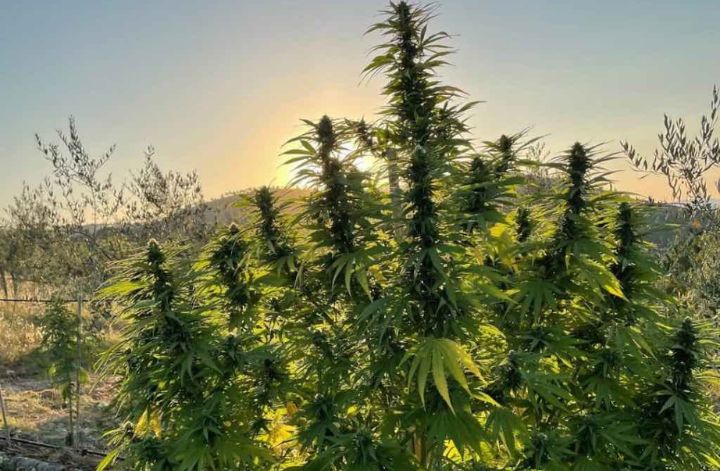
One regular job will be ensuring that neighbouring bushes, shrubs etc don’t gradually start stealing the sunlight from your plants. During the vegetative growth of cannabis, in Spring, much of the local wild plant life will also want to explode into growth. If necessary, chop down bordering plant life aggressively. This process may need repeating a couple of times throughout the season.
It’s also worth adding that growers need to be careful that they don’t plant their cannabis seeds outdoors, or behind a window too early in the season. This is to avoid your plants going directly into bloom with short daylight hours.
When days are short (around 12-14 hours per day) it can result in young plants going into bloom directly from seed. One solution, whether seeds are germinating behind a window or in a greenhouse, is to use supplemental lighting to extend the daylight hours to at least 16-18 hours per day.
10. Know when and how to harvest your guerrilla crop
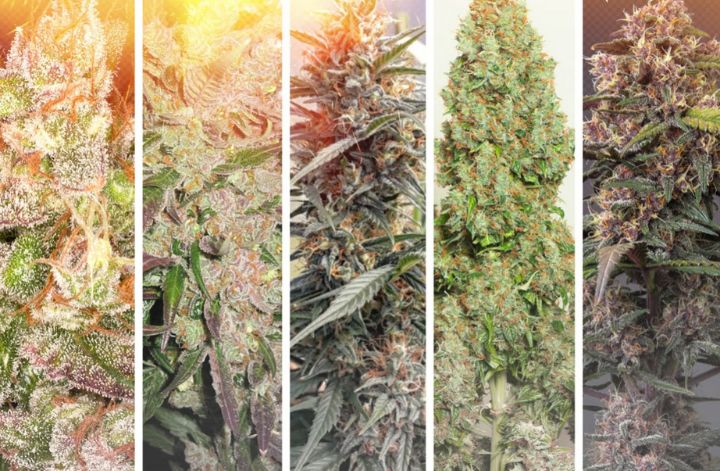
Harvest your buds at the preferred time for you. Many people feel commercially grown cannabis is sometimes harvested a week or two early due to financial pressures.
Harvest your own weed just as you like it. Have a harvest plan. This could be to trim and vacuum seal the fresh weed at your guerrilla grow location. This allows it to be transported to a drying area, often at the guerrilla growers house, with a minimum of smell.
Bonus tip: A good guerrilla grower leaves no trail to follow!
Once winter arrives all the natural foliage, bushes and shrubs which gave your secret grow location her wonderful natural camouflage will be gone. That’s why you should remove all plant pots, tools/bags, spades, shears, empty compost bags and anything else from your location. Leave anything there and there is a chance that a nosey dog walker will investigate, potentially compromising your plot for future use.


